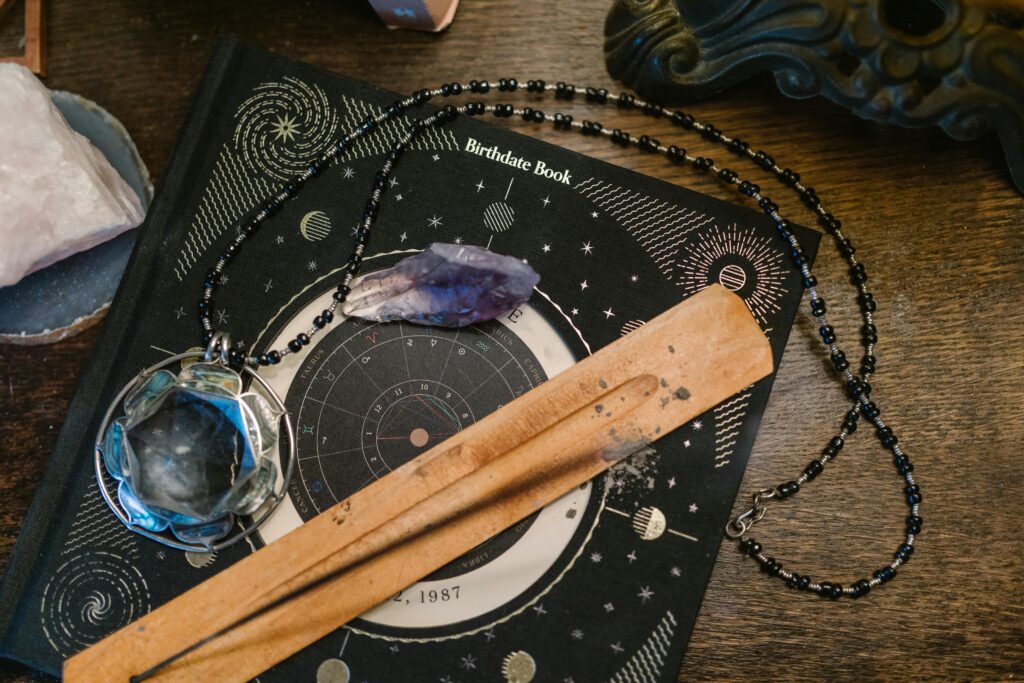Understanding Vedic Horoscope Reading: A Gateway to Self-Awareness

Vedic astrology, also known as Jyotish Shastra, is a profound and ancient system of astrology rooted in the Vedas, the sacred texts of India. This celestial science seeks to understand the influence of planetary movements on human life, guiding individuals toward self-awareness, personal growth, and harmony with the cosmic order. Unlike Western astrology, which primarily focuses on the Sun sign, Vedic astrology incorporates the lunar system, providing a more nuanced and detailed view of one’s destiny. Here, we delve into the essence of Vedic horoscope reading and its role in shaping our understanding of life.
The Base of Vedic Astrology
At the core of Vedic astrology lies the concept of the Navagrahas (nine celestial bodies) and their influence on human existence. These include the Sun, Moon, Mars, Mercury, Jupiter, Venus, Saturn, Rahu, and Ketu. Unlike modern astronomy, Rahu and Ketu are shadow planets representing the lunar nodes. Together, these celestial entities govern various aspects of life, from personality traits to life events.
A Vedic horoscope, or Janam Kundali, is a detailed chart calculated based on the exact time, date, and place of an individual’s birth. This chart is divided into 12 houses, each representing specific life areas such as career, relationships, health, and spirituality. The placement of planets in these houses, combined with the zodiac signs they occupy, reveals the blueprint of one’s life path.
Key Components of a Vedic Horoscope
- The Ascendant (Lagna): The ascendant is the zodiac sign rising on the eastern horizon at the time of birth. It represents the physical body, personality, and overall life direction. The Lagna is pivotal in determining how an individual interacts with the world and responds to challenges.
- The Moon Sign (Rashi): The Moon sign, based on the position of the Moon in a specific zodiac sign, reflects the mind, emotions, and inner self. Unlike the Sun sign in Western astrology, the Moon sign holds more significance in Vedic astrology, shaping an individual’s emotional intelligence and mental well-being.
- The Sun Sign: Although secondary to the Moon sign, the Sun sign in Vedic astrology symbolizes the soul, vitality, and core identity. It represents the individual’s potential and higher purpose in life.
- Dashas (Planetary Periods): Dashas are unique to Vedic astrology and represent the sequential phases of planetary influences in a person’s life. The most widely used system is the Vimshottari Dasha, spanning 120 years and divided among the nine planets. These periods reveal the timing of significant events and challenges.
- Transits (Gochar): Planetary transits signify the ongoing movement of planets in the sky and their impact on an individual’s natal chart. Transits can activate specific houses and influence events, relationships, and opportunities.
The Role of Nakshatras
Nakshatras, or lunar mansions, are 27 unique constellations that divide the 360-degree zodiac. Each Nakshatra carries its own symbolism, deity, and qualities, adding depth to the horoscope. The Moon’s position in a Nakshatra at the time of birth provides insight into an individual’s personality, talents, and spiritual inclinations.
Benefits of Vedic Horoscope Reading
- Self-Awareness and Personal Growth: A Vedic horoscope offers a mirror to one’s inner self, shedding light on strengths, weaknesses, and latent potential. By understanding their chart, individuals can make informed decisions and align their actions with their true purpose.
- Relationship Insights: Compatibility analysis, or Guna Milan, is a vital aspect of Vedic astrology. By comparing two horoscopes, astrologers assess the harmony between partners, addressing potential challenges and enhancing mutual understanding.
- Career and Financial Guidance: The 10th house in a horoscope, along with its ruling planet, reveals career prospects and professional inclinations. Vedic astrology can help identify suitable career paths, financial stability, and periods of growth or caution.
- Health and Well-Being: The 6th house governs health, and its planetary influences indicate potential ailments or vulnerabilities. Remedies such as gemstones, mantras, and dietary changes can mitigate challenges and promote well-being.
- Spiritual Evolution: Vedic astrology is deeply intertwined with spirituality, guiding individuals on their journey toward self-realization. The 9th and 12th houses, along with planetary alignments, highlight opportunities for spiritual growth and inner peace.
Remedies and Their Significance
Vedic astrology emphasizes remedies to harmonize planetary influences and alleviate challenges. Common remedies include:
- Gemstones: Wearing specific gemstones strengthens favorable planetary energies.
- Mantras: Chanting mantras invokes the blessings of deities associated with certain planets.
- Yagnas and Pujas: Rituals and offerings help balance planetary imbalances.
- Charity and Acts of Service: Donating to causes related to afflicted planets fosters positive karma.
Modern Relevance of Vedic Astrology
In today’s fast-paced world, Vedic astrology remains a valuable tool for navigating life’s uncertainties. Its holistic approach integrates physical, emotional, and spiritual dimensions, offering clarity and direction. Whether seeking solutions to life’s dilemmas or embarking on a path of self-discovery, a Vedic horoscope reading provides timeless wisdom and practical guidance.
Conclusion
Vedic horoscope reading is not merely a predictive tool but a profound system for understanding the interconnections of the universe and human life. By decoding the celestial blueprint, individuals can unlock their potential, overcome challenges, and achieve harmony with the cosmic rhythm. Whether you are a seeker of spiritual truths or simply looking for answers to everyday questions, Vedic astrology serves as a guiding light on the journey of life.
